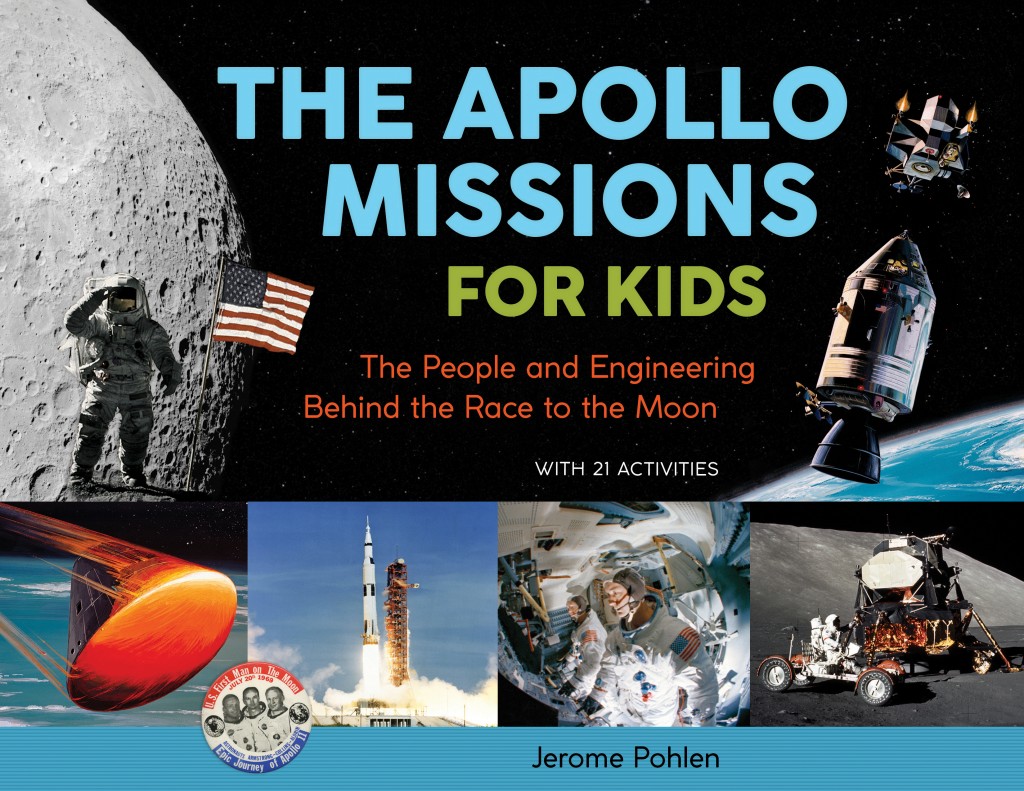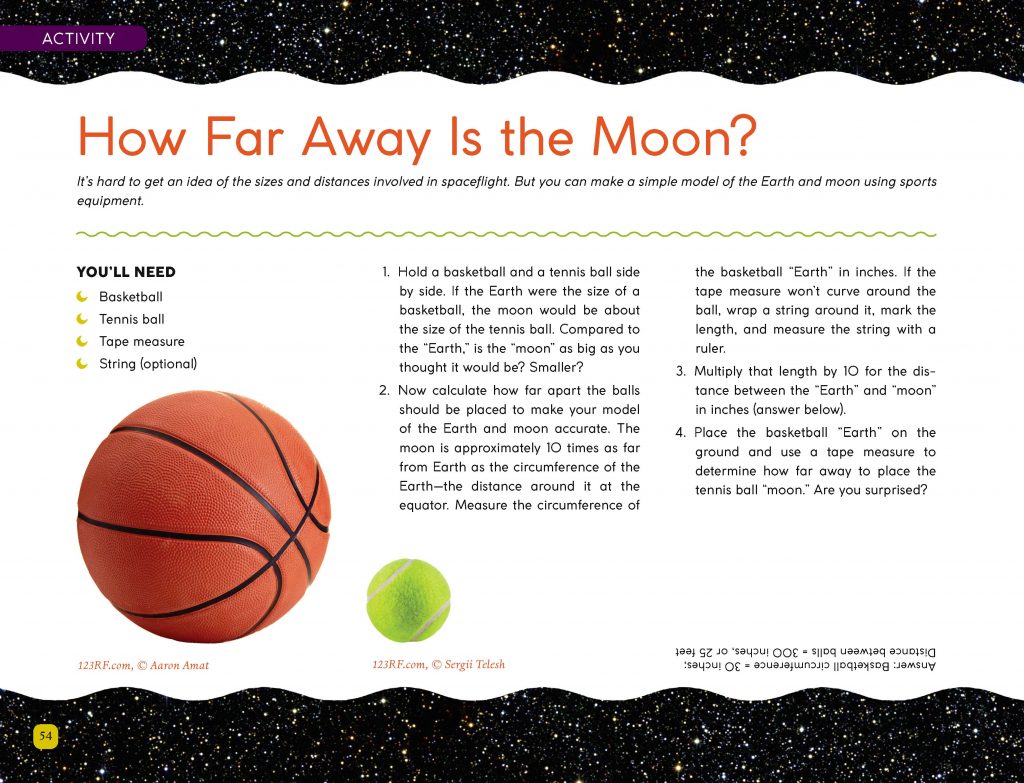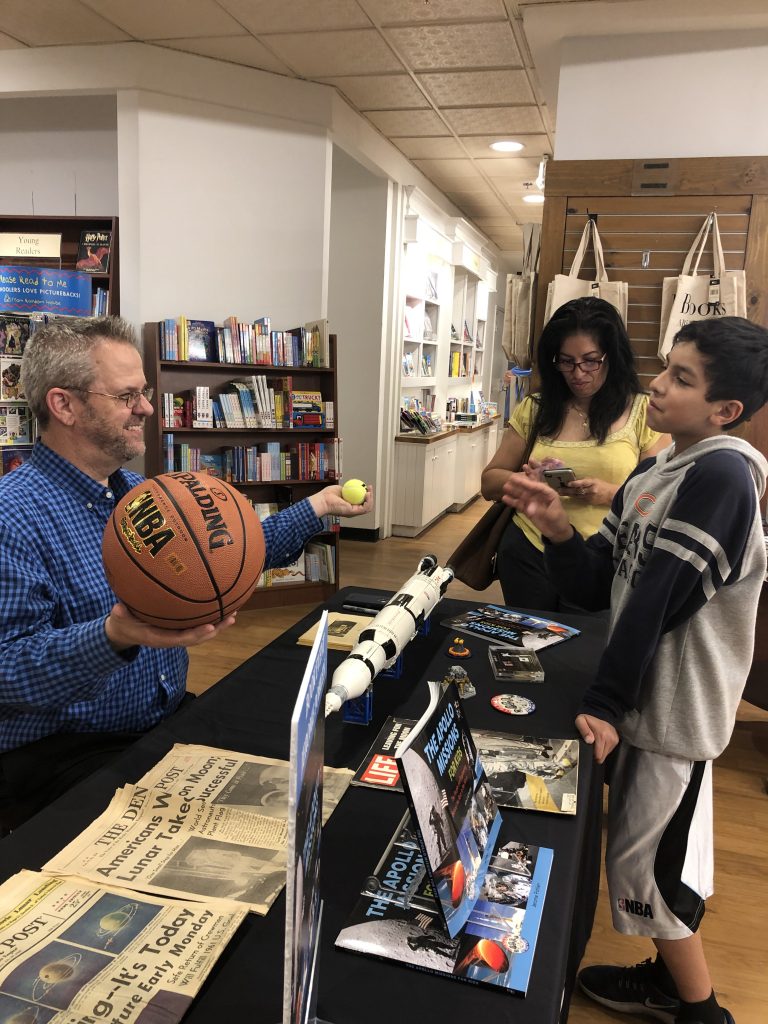Read below to learn about Jerome Pohlen’s research and writing of his newest book, The Apollo Missions for Kids, including which activities he recommends and what he hopes kids will take away from reading it.

While there have been multiple books for kids about specific Apollo missions, yours is the first that covers every single mission of the Apollo program. Why did you choose to cover such a broad range of time? How did you decide which details to include or leave out?
Each mission in the Apollo program built on the previous missions. There never would have been an Apollo 11 moon landing if the spacecraft hadn’t been tested earlier by astronauts on Apollos 7, 8, 9 and 10. The Apollo 11 astronauts explored an area about the size of a pro baseball infield, but what they learned allowed later missions to drive a lunar rover more than six miles away from the lander. The missions were all connected; to tell one story you have to tell them all. Not only that, there are great stories from the missions that are seldom discussed. Apollo 12 was struck by lightning during launch—twice!—and Apollo 10 nearly crashed into the moon. The astronauts on Apollo 14 couldn’t find an enormous crater they were looking for, and it was only 60 feet away from them. Why did that happen?
As the author of quite a number of Chicago Review Press titles, including Albert Einstein and Relativity for Kids and Gay & Lesbian History for Kids, how did the writing process for this book differ from your previous books?
Believe it or not, my writing process was the same: I read and read and read about the subject, and like solving a jigsaw puzzle without a photo for reference, the story slowly appears from the pieces. One difference with Apollo, however, was the wealth of original source material to study. Every word uttered on every mission was recorded and transcribed, and it’s all available online—it was a lot to dig through.
Your book is interspersed throughout with 21 creative hands-on projects. If you were to recommend one or two activities for kids, which ones would you choose?
How Far Away Is the Moon? It’s a simple activity, yet it surprises everyone. It starts with a given: If the Earth were the size of a basketball, the moon would be size of a tennis ball. But how far away would the “moon” be from the “Earth” at this scale? Readers calculate it to be 25 feet. Place the two balls 25 feet apart and you’ll get some idea of how amazing an accomplishment Apollo was.


Jerome Pohlen displays this activity at an author event at Barbara’s Bookstore in Macy’s.
What do you hope kids (and adults) take away from reading this book?
Humans are capable of remarkable things if they commit to achieving them. When Kennedy announced we would go to the moon before the end of the 1960s, there was really no evidence it was even possible. Commitment to that goal made it happen—the answers to Apollo’s engineering and scientific challenges were solved because Kennedy set the goal. We could do the same with climate change, as long as we commit ourselves to solving the problem.
What five people—living, dead, fictional or nonfictional—would you have over for a dinner party and why?
Albert Einstein (smart), Auntie Mame (fun), Amy Sedaris (unpredictable), Kurt Vonnegut (visionary) and Stephen Colbert (to pull it all together).
Learn more about the book here!
No Comments
No comments yet.